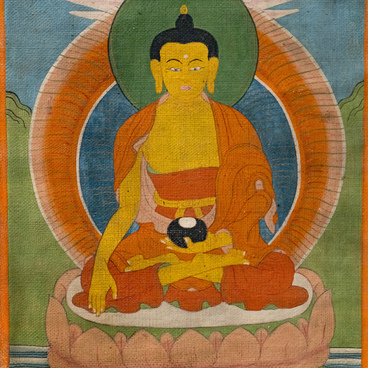The collection of the Sakha Republic National Art Museum features Giovanni Battista Salvi da Sassoferrato’s painting “The Praying Madonna.”
A representative of the Baroque era, the Italian painter Giovanni Battista Salvi (1609–1685), nicknamed Sassoferrato after his birthplace, created paintings based on biblical subjects and numerous copies of paintings for private patrons, made in different styles. He was born in Sassoferrato, a town located halfway between Rome and Florence, west of the Apennine Mountains. Giovanni began to study painting under his father, the artist Tarquino Salvi. In his youth he came to Rome and then, presumably, entered the workshop of Domenichino in Bologna, who was a pupil of Annibale Carracci.
The painting “The Praying Madonna” from the museum’s collection also testifies to the influence of Albrecht Dürer’s work on Sassoferrato. It is known that the Madonna with Child was a favorite theme in Dürer’s painting. “Virgin and Child with a Pear” (1512) by Dürer was very popular: there are many copies and variations made by other artists of Italy and Germany, not only in painting, but also in engraving. Giovanni made a kind of paraphrase on the “Virgin with a Pear.”
In Sassoferrato’s independent interpretation of the
Dürer composition, the image of Mary dominates the painting. The Baby is
absent, in the foreground Mary’s hands are clasped in a prayerful gesture.
However, just like in Dürer’s painting, Madonna’s head is tilted and slightly
turned to the left. She wears the same transparent veil, through which flowing
folds Her hair and forehead are visible. In this small painting, the face of
Madonna, imbued with lyricism and tenderness, appears as a typical young
Italian woman in a red dress and a blue cape on a neutral brownish background.
Madonna’s bright clothes balance the calm background. The pure, subtle, chaste
face of Madonna is focused on inner spiritual experience. There is no halo,
which makes the image of the saint closer and more human. The artist carefully
painted details such as the folds of the thin veil and the uneven edges of her
fingernails. Her appearance is imbued with tranquility and heavenly harmony.



